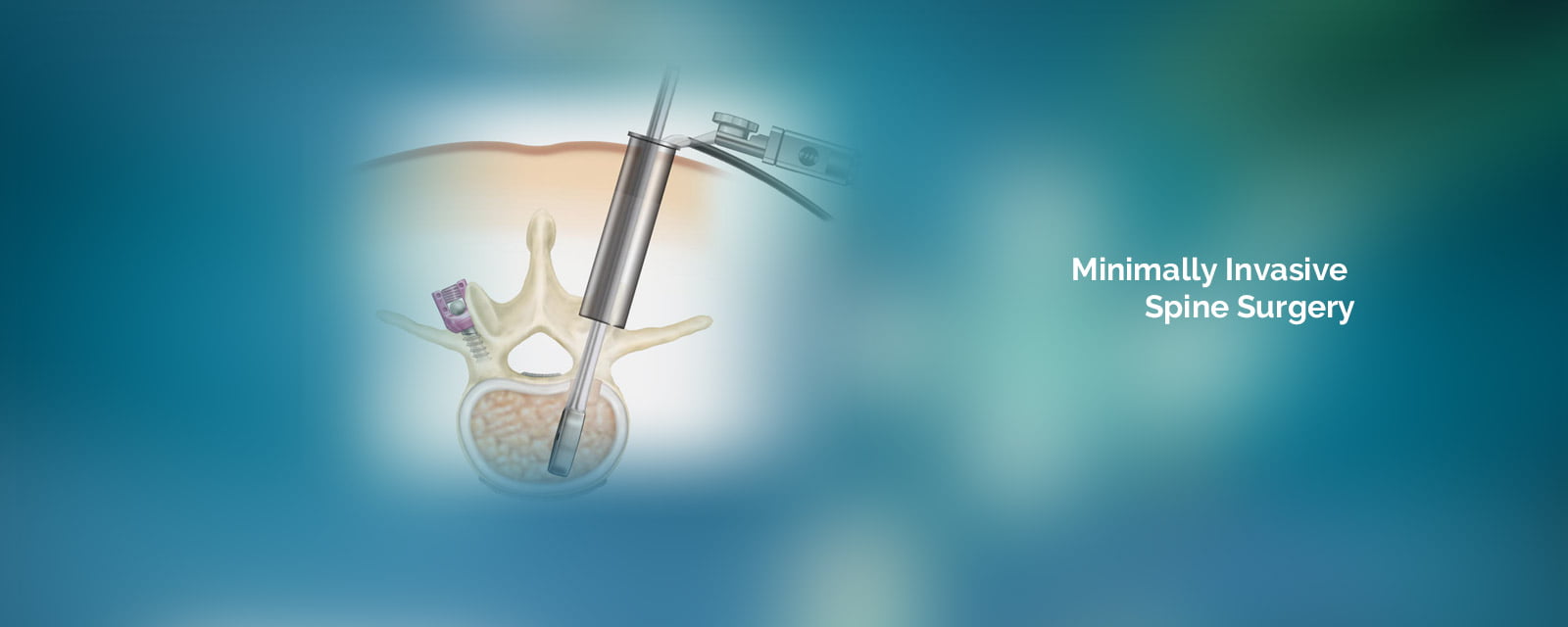Best Minimally Invasive Spine Surgery in Chennai, India
Common Spine ProblemsThe most common spine issues causing back or neck pain that can be treated by minimally invasive spine surgery are enlisted below:
- Intervertebral Disc Degeneration: This is the most common cause of lower back pain. In this, the intervertebral disc shrinks in size and wears off with the increasing age. As a result, the disc loses its integrity and cushioning ability, thereby producing pain and discomfort in the upper or lower back.
- Spondylolisthesis: In this condition, the vertebrae and ligaments cannot maintain their position due to aging resulting in slipping of the lower vertebra out of place. In such instances, the spinal nerves are compressed by this misaligned bone causing back pain.
- Herniated Intervertebral Disc: This occurs when the weakened disc puts pressure on the center of the intervertebral disc. Such discs are compressed and bulge outward, resulting in disc herniation or sometimes rupture leading to back pain.
- Spinal Stenosis: In this condition, the spinal canal gets narrow down, leaving less space for the spinal cord and spinal nerves, thereby compressing them and leading to pain and numbness in the upper or lower limb.
- Radiculopathies: Sciatica is the most common radiculopathy condition of the lumbar spine in which the spinal stenosis or herniated disc in the lumbar area results in compression, Injury, and inflammation of the spinal nerve root of the sciatica nerve, which causes numbness, tingling sensation, and disabling pain that radiates from low back to the buttock and lower leg.
- Skeletal abnormalities: These include scoliosis, lateral curvature of the spine, or other congenital abnormalities of the lumbar spine from birth resulting in back pain and discomfort.
- Other Conditions: Apart from the above-mentioned common conditions, other medical conditions can cause low back pain. Enlisted below are some of them;
- Tumors of Spine
- Traumatic Injury of the spine
- Spinal Infections like osteomyelitis
- Inflammatory diseases of the spine comprising of osteoarthritis, spondylosis, etc.
Spine Surgeries
Treatment Options
For the above-mentioned spinal conditions, there are two treatment options:
- Non-Surgical Options: Medical Management
- Physiotherapy
- Surgical Options:
- Spine Surgery is often recommended as a last treatment option. It is advisable for the patients where clinical symptoms are chronic which have not stabilized for more than 2-3 months even after undergoing non-surgical treatment (conservative treatment), including medications, injections, or physiotherapy.
- The ultimate aim of spine surgery is to excise the prolapsed disc part, thereby decompressing the spinal cord by releasing the pressure caused by pinched spinal nerves. This is usually performed using one of the following techniques; Spinal Discectomy: In this, the herniated disc material that is pressing the spinal cord or spinal nerve root is removed.
- Percutaneous Discectomy: This technique is used either for the bulging discs or the intervertebral discs that have not herniated into the spinal canal.
- Minimally Invasive Spinal Decompression: Decompression surgery, as its name suggests, is performed to decompress the compressed spinal nerves. It helps relieve the pressure over spinal nerves by excising the diseased disc, vertebral bone, or ligamentum flavum pinching over the nerves. This procedure is often advised in cases of spinal canal stenosis, which is caused by bony growths, disc herniation, thickened joints, or loosened ligaments.
- It is performed by removing a small part of the vertebral bone pinching over the nerve root or by removing disc material from the nerve root; it is compressing to provide spinal nerve root more space and provide a better healing environment. Various procedures are used for Spine Decompression.
They are-
- Laminotomy or Laminectomy
- Foraminotomy or Foraminectomy
- Corpectomy
- Port Hole Decompression
4. Minimally Invasive Spinal Fusion Surgery: This procedure reduces pain and nerve irritation by creating a solid bone between the adjacent vertebrae, thereby eliminating any movement between the diseased bones. In this surgery, the diseased disc is excised and then replaced with the spacer device, pedicle screws, rods attached to the back of the involved vertebrae, and an interbody fusion spacer is inserted into the disc space from one side of the spine.
This fusion surgery is usually done using two approaches depending on the individual patient’s condition. One is the Anterior, and another is the Posterior approach. The anterior process involves placing the bone directly into the section between the vertebrae where the shock-absorption disc had been situated.
However, the posterior approach is the most common one in which the surgery is done from the back. Moreover, there are three main techniques in this approach, they are:
- Transforaminal Lumbar Interbody Fusion surgery (TLIF)
- Posterior Lumbar Interbody Fusion Surgery (PLIF)
- Postero-lateral Gutter Fusion surgery
Best Minimally Invasive Spine Surgery in Chennai, India

